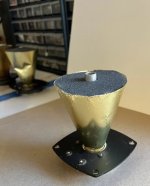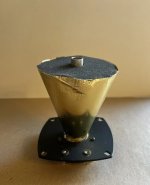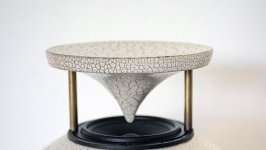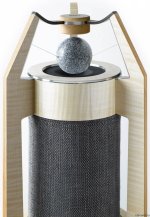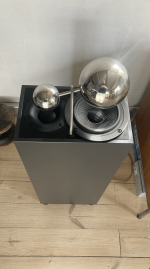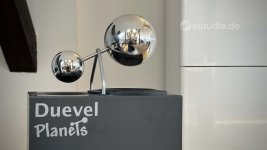Why make an accordion? It’s enough to make a rigid cylinder from a hyper-light and hyper-hard material, and make one corrugated fold at the top.
I did a little tinkering. Unfortunately, I don't have a workshop and only have hobby tools, so the results are a bit modest.
I was just trying to get a basic idea of what was going on. The speaker is a very cheap PA chassis, basically born to be tinkered with.
Here are some pictures:

Membrane trimmed, carbon fiber for reinforcement:


Flat membrane cone made of 5mm XPS

Glued



Finally, the membrane is glued to the top plate


Measured in the dampened housing (on a stand)

Measurements


I was just trying to get a basic idea of what was going on. The speaker is a very cheap PA chassis, basically born to be tinkered with.
Here are some pictures:
Membrane trimmed, carbon fiber for reinforcement:
Flat membrane cone made of 5mm XPS
Glued
Finally, the membrane is glued to the top plate
Measured in the dampened housing (on a stand)
Measurements
interesting, can you explain the structure in more detail? should it result in a bending wave chassis? greetings
moschfet
I thought you wanted to create a high-frequency tweeter of your own design, and if you want to get a circular directivity of frequencies in the mid frequencies, then this is done very simply with a regular speaker, you should not spoil the speaker cone, just make an acoustic diffuser:Attachments
I have some chrome plated solid plastic "balls" as depicted in the 2nd photo above, maybe 5" - 6" in diameter if anyone wants them. I thought of making a diffuser, but it seems I prefer the "backwave" radiation to be out of phase with that of the front, which is not possible with such an arrangement. Like an OB would do.
do an experiment. Blow on a bottle, the draft comes to the back. So the ball only works at very high frequencies. but is it a larger chassis?
That was just a test setup, I couldn't have made it that small with my home tools.I thought you wanted to create a high-frequency tweeter of your own design
In principle, you could take two small soft dome tweeters and glue them together on the dome. Fix them on the outside with struts and you would have a tweeter based on my principle in a push-push arrangement.
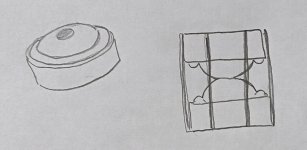
I think your explanation for ball not working as diffuser is totally wrong. Sound is vibration of the molecules, tiny changes in air pressure. Sound travels like wave not like wind. Like people in the stadium stand making wave, just rising up and down. Not moving out of their chairs.do an experiment. Blow on a bottle, the draft comes to the back. So the ball only works at very high frequencies. but is it a larger chassis?
Wind goes around the bottle, because its a flow, like river bends around rock. But that has nothing to do with sound. Sound reflects of objects.
Ball is rather good sound reflector.
Attachments
Last edited:
But if both tweeters get the same pushing force the dome contact area will also be "fixed".my is free
As thread is about omnidirectional tweeter, that's precisely what i said. Ball is perfect reflector.
There is something in this, you can get creative with it and attach small screens in the horizontal plane, then there will be no reflections from the floor and ceiling, but only circular radiation.That was just a test setup, I couldn't have made it that small with my home tools.
In principle, you could take two small soft dome tweeters and glue them together on the dome. Fix them on the outside with struts and you would have a tweeter based on my principle in a push-push arrangement.View attachment 1330211
And if these screens are expanded a little, you can get a circular horn😀.
- Home
- Loudspeakers
- Planars & Exotics
- Omnidirectional tweeter

